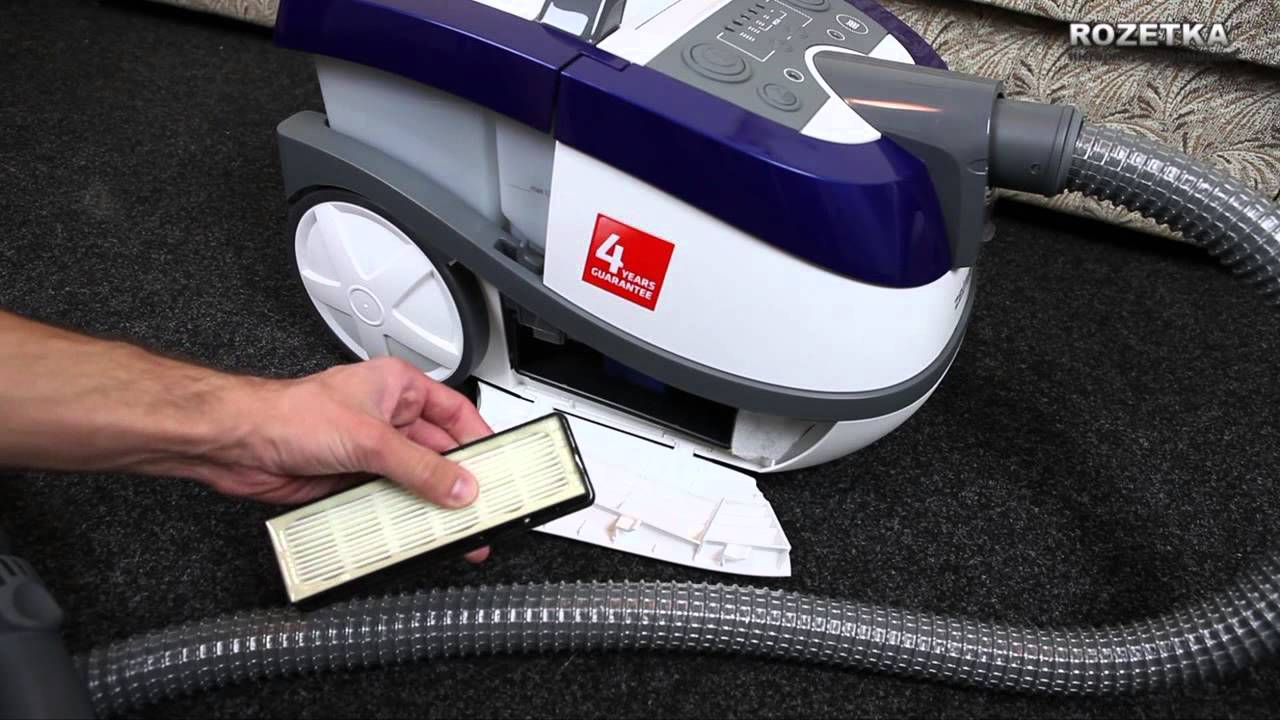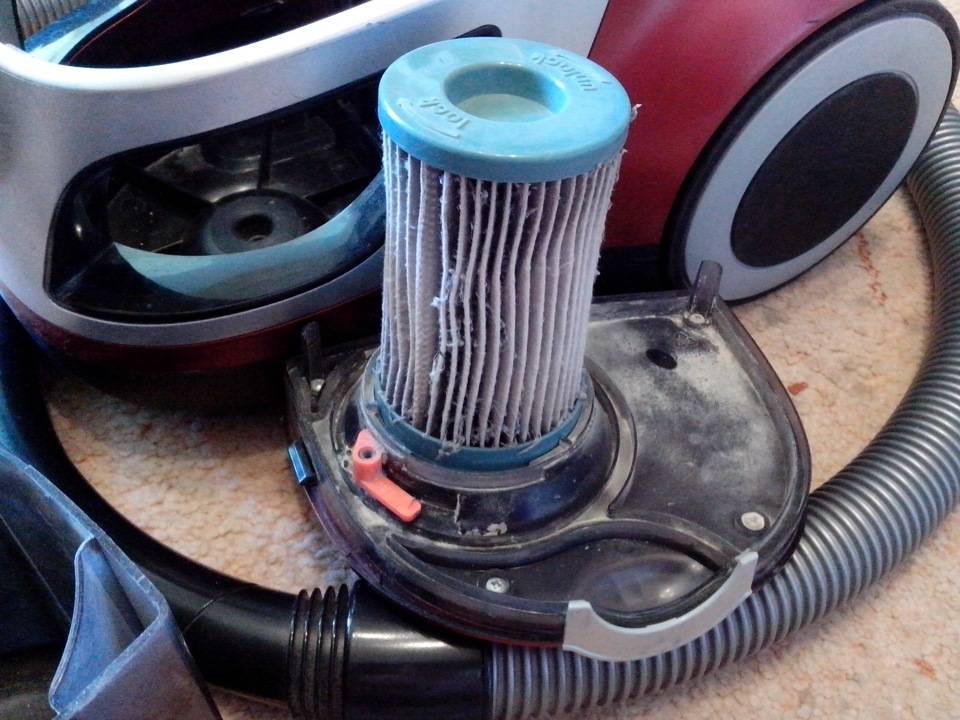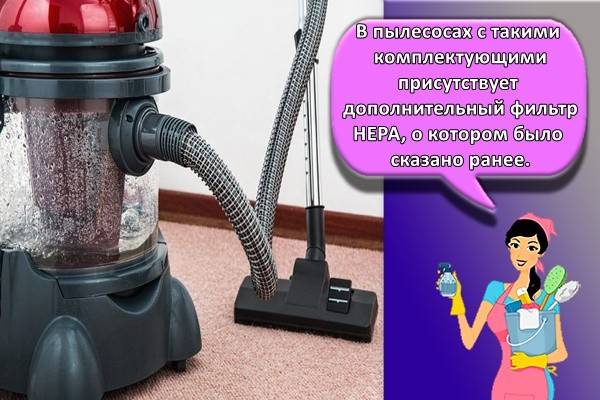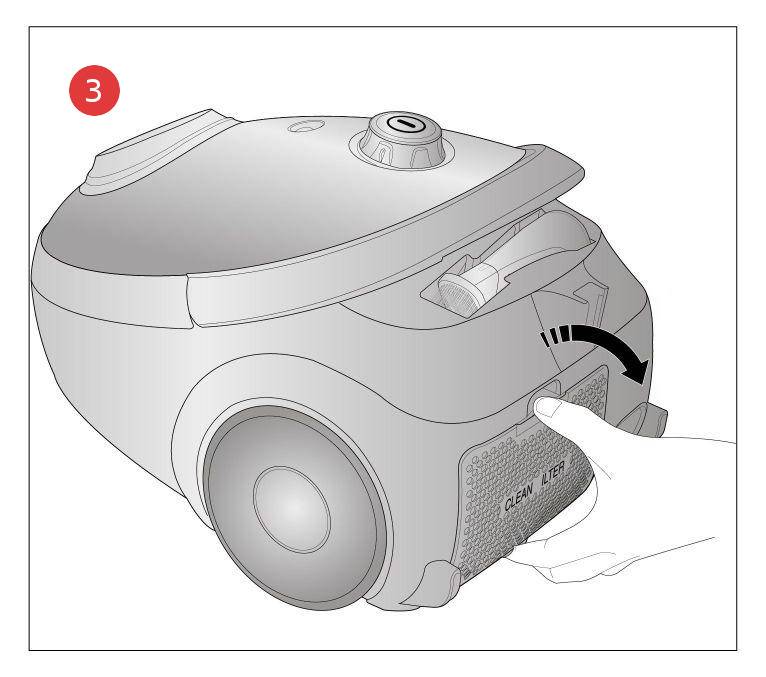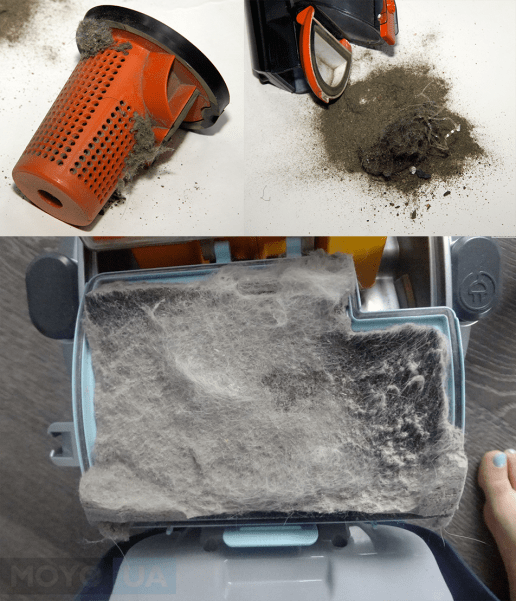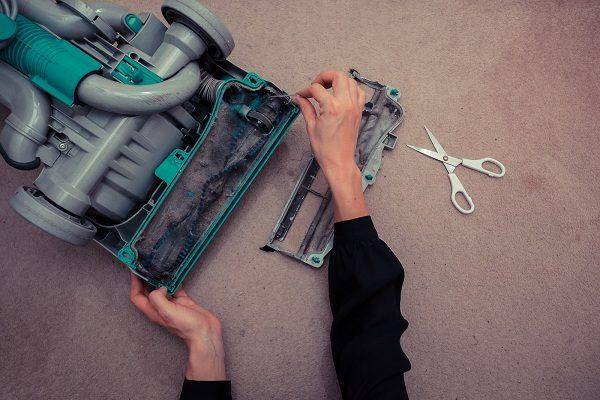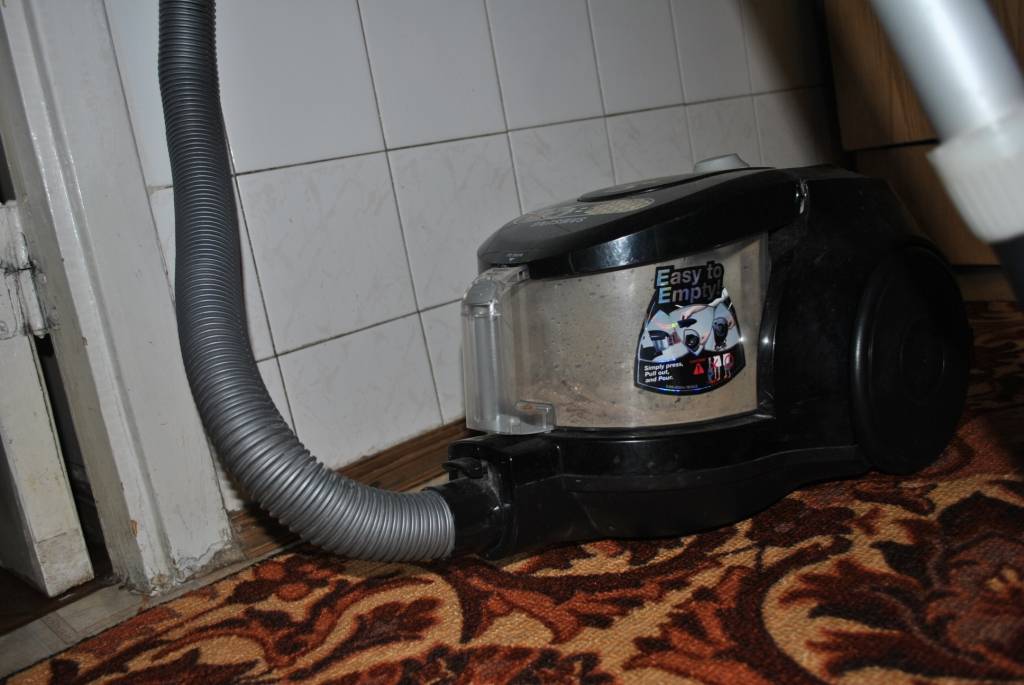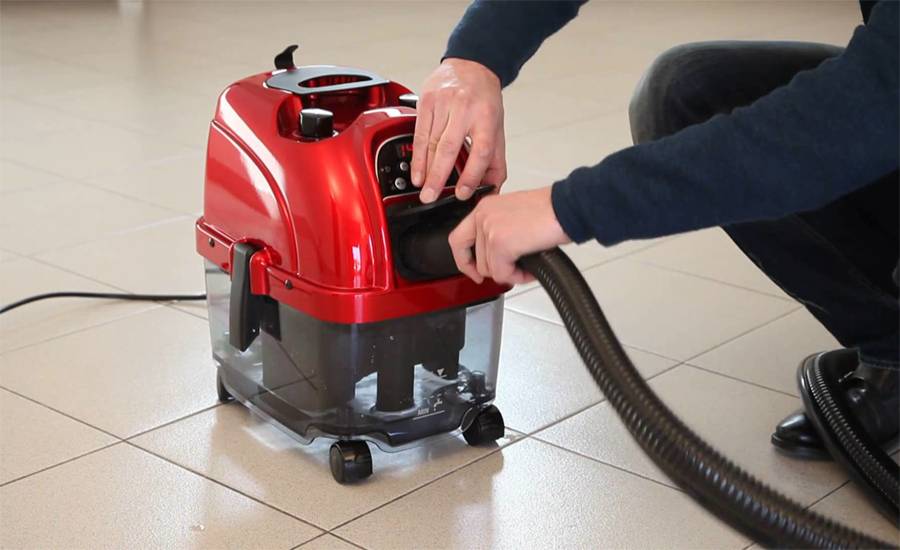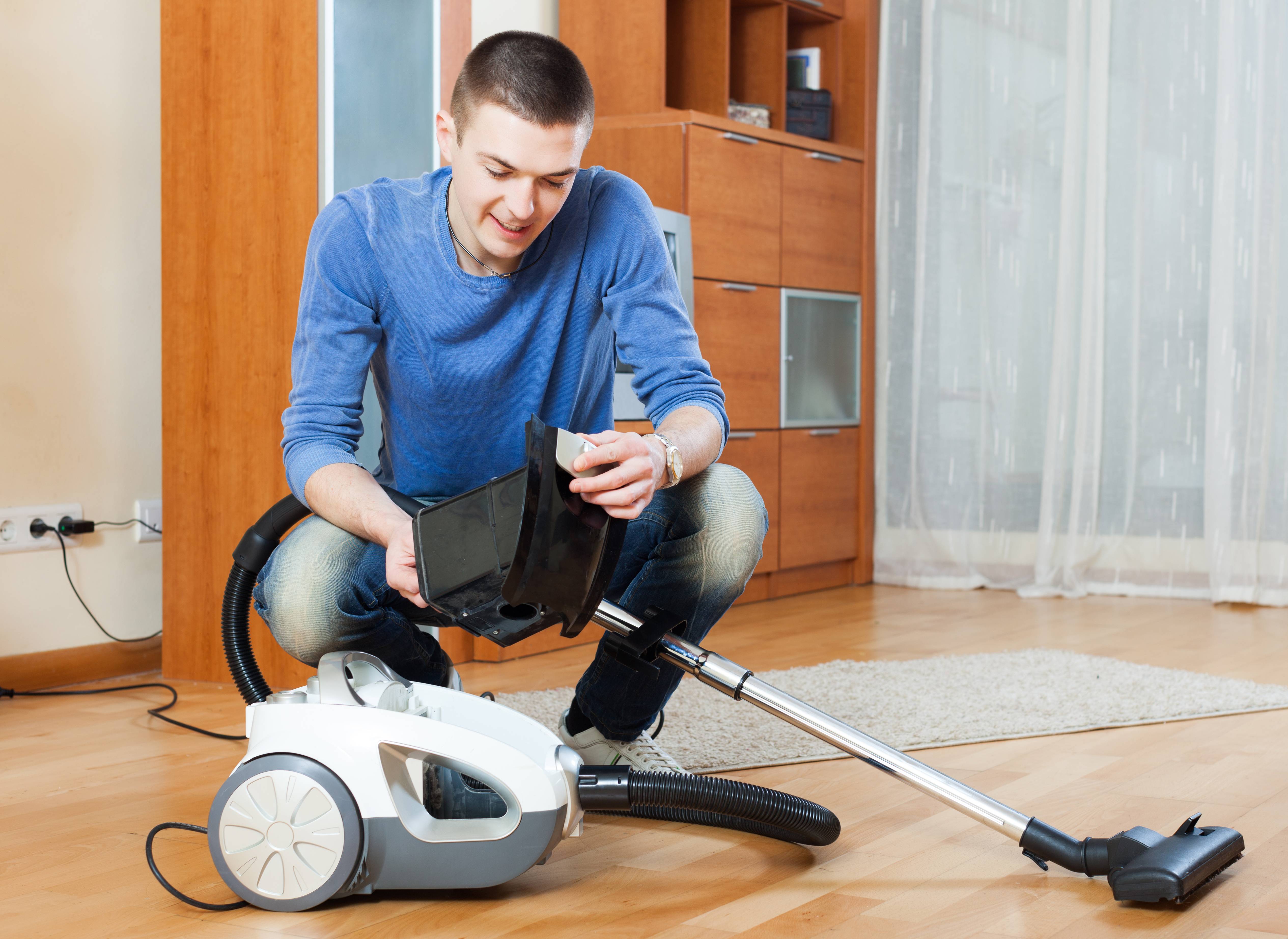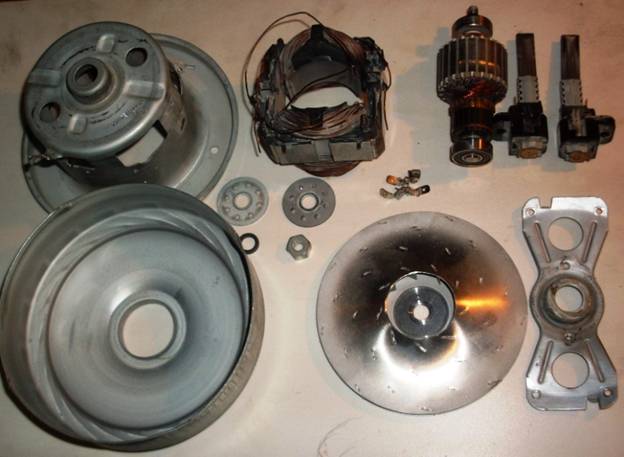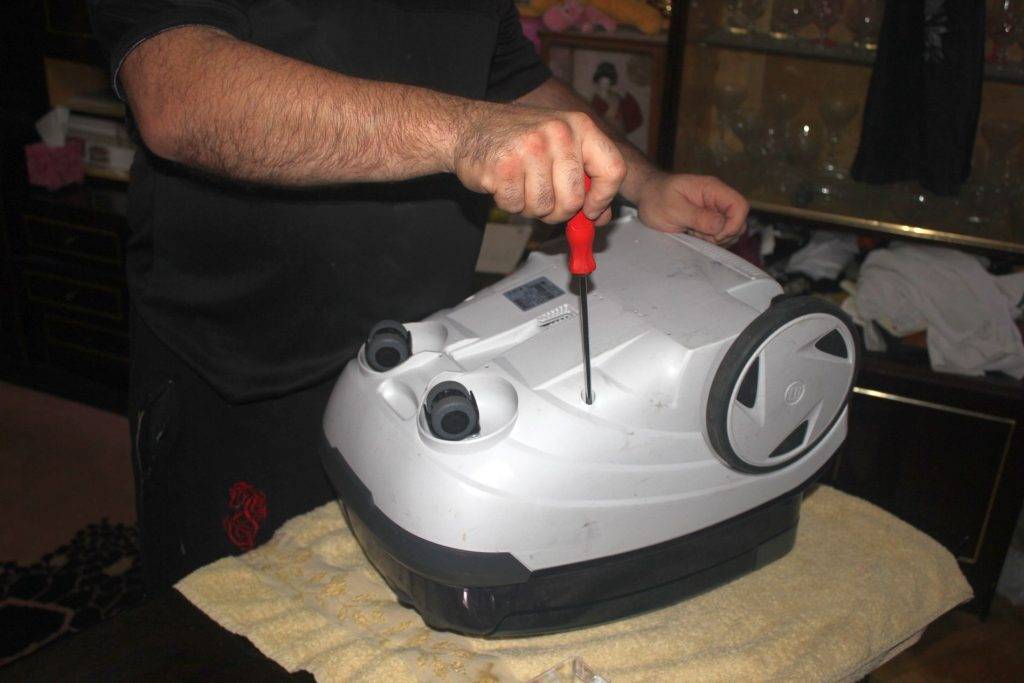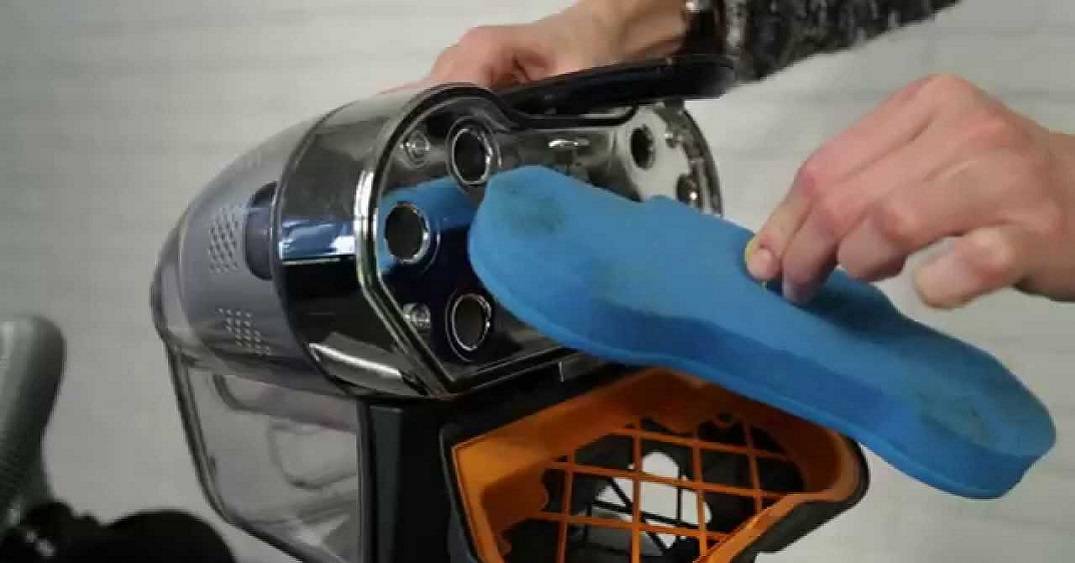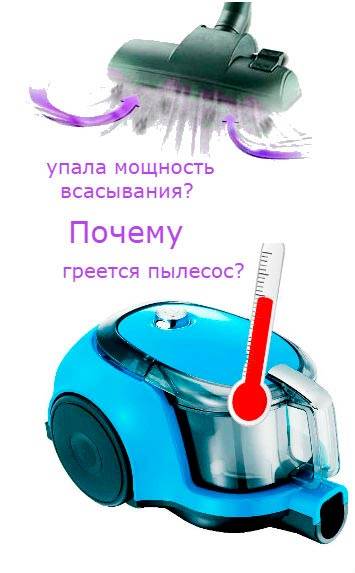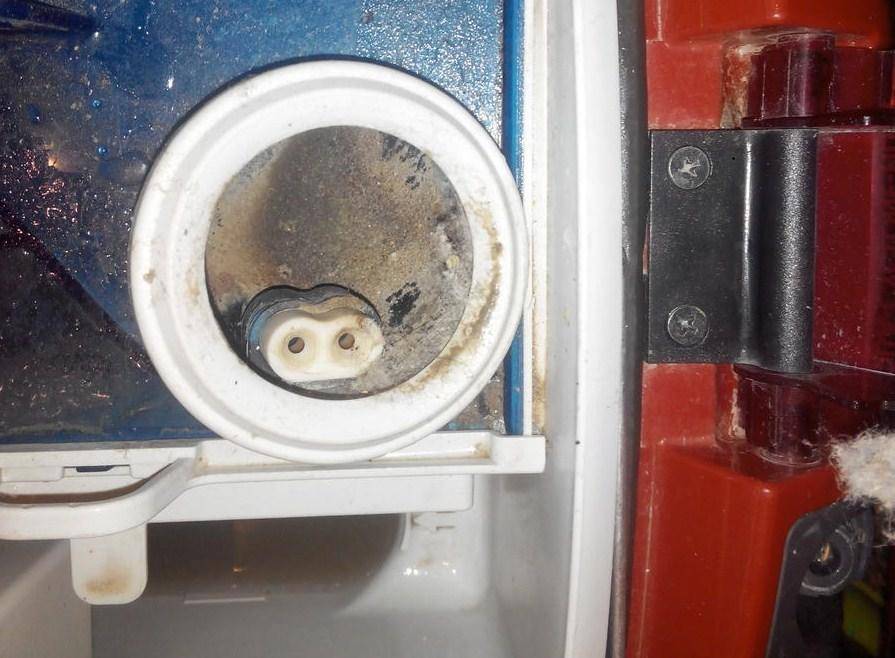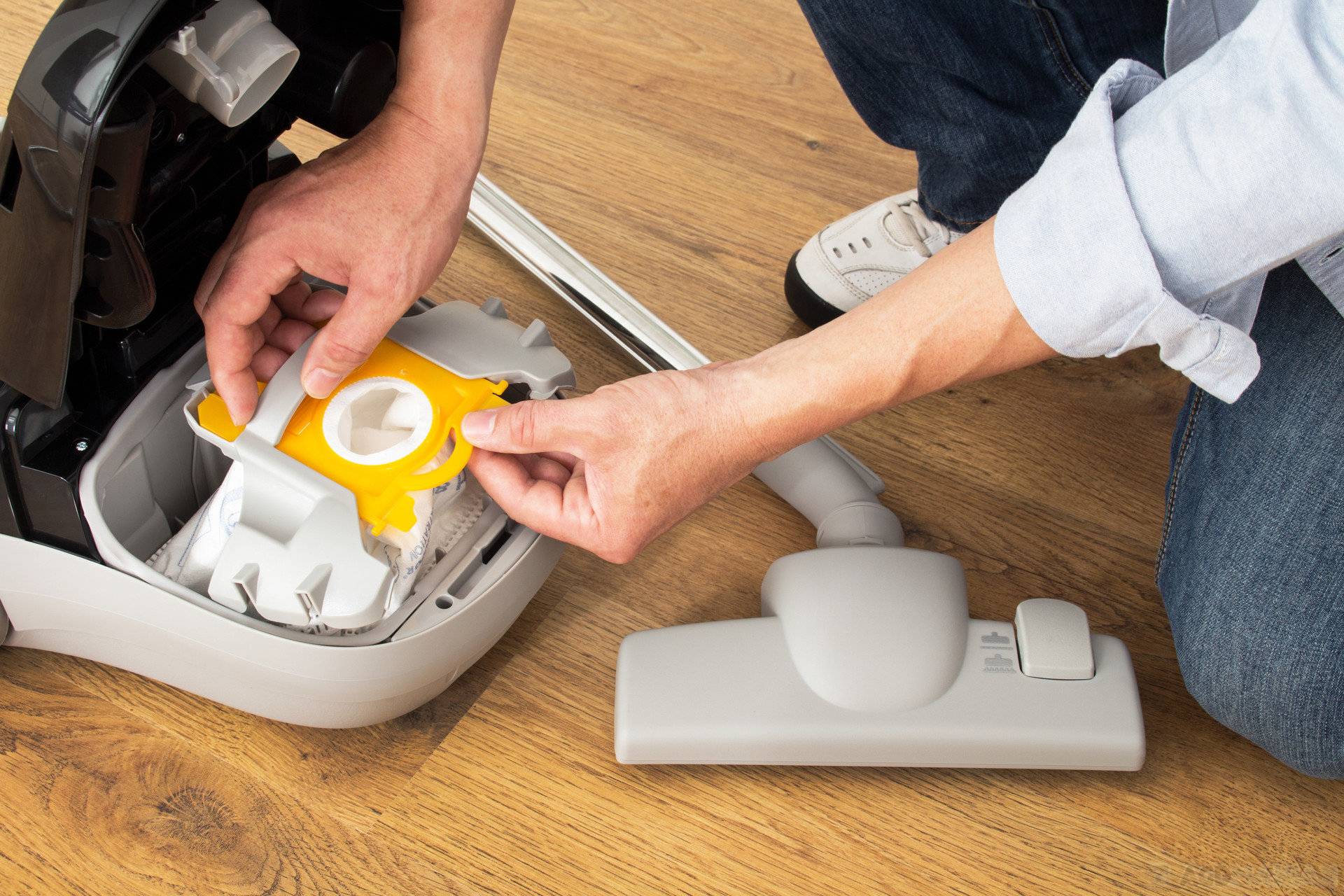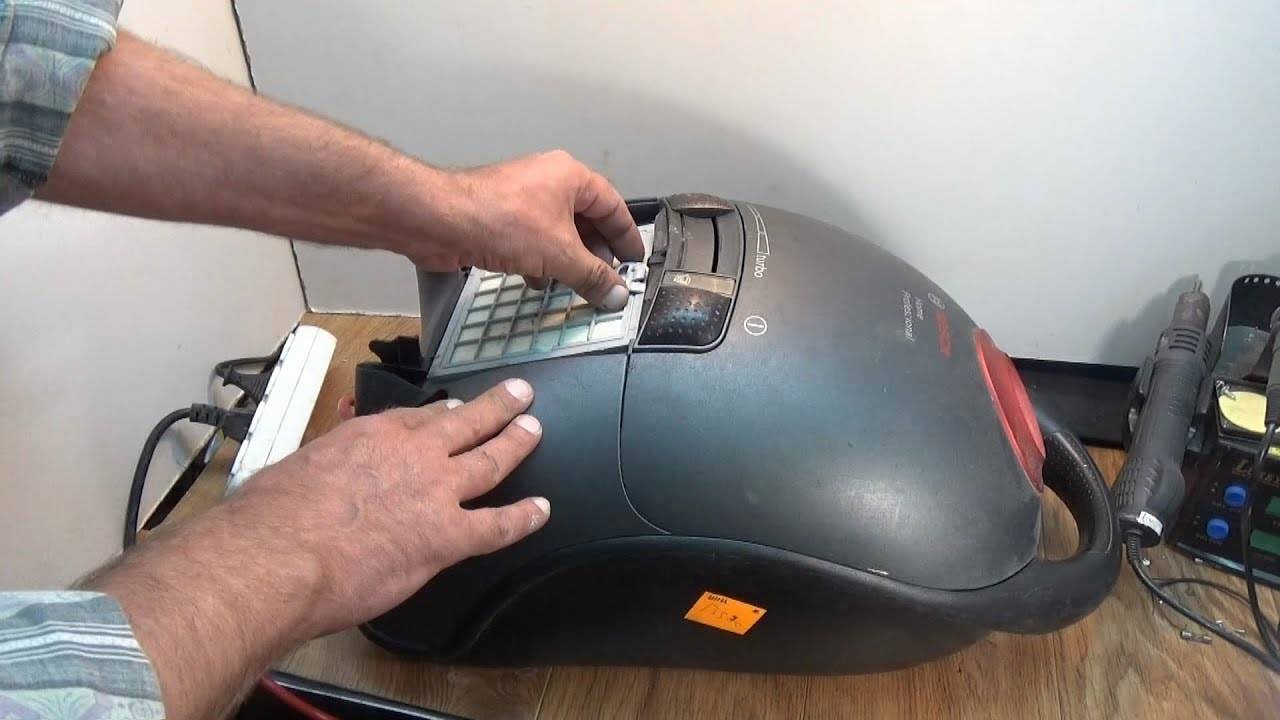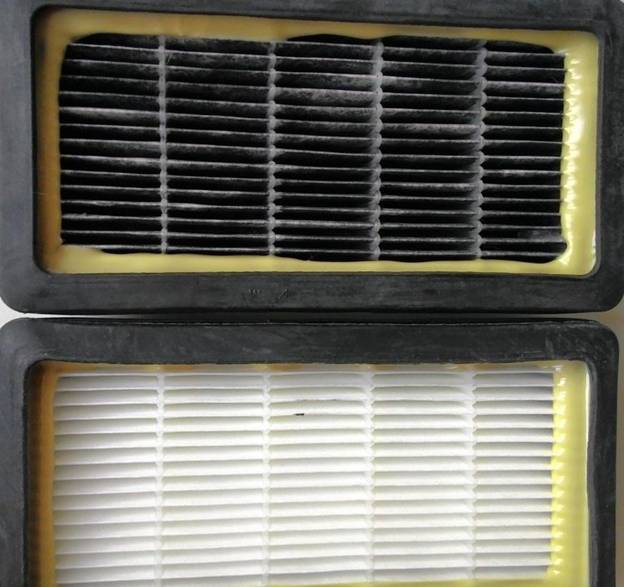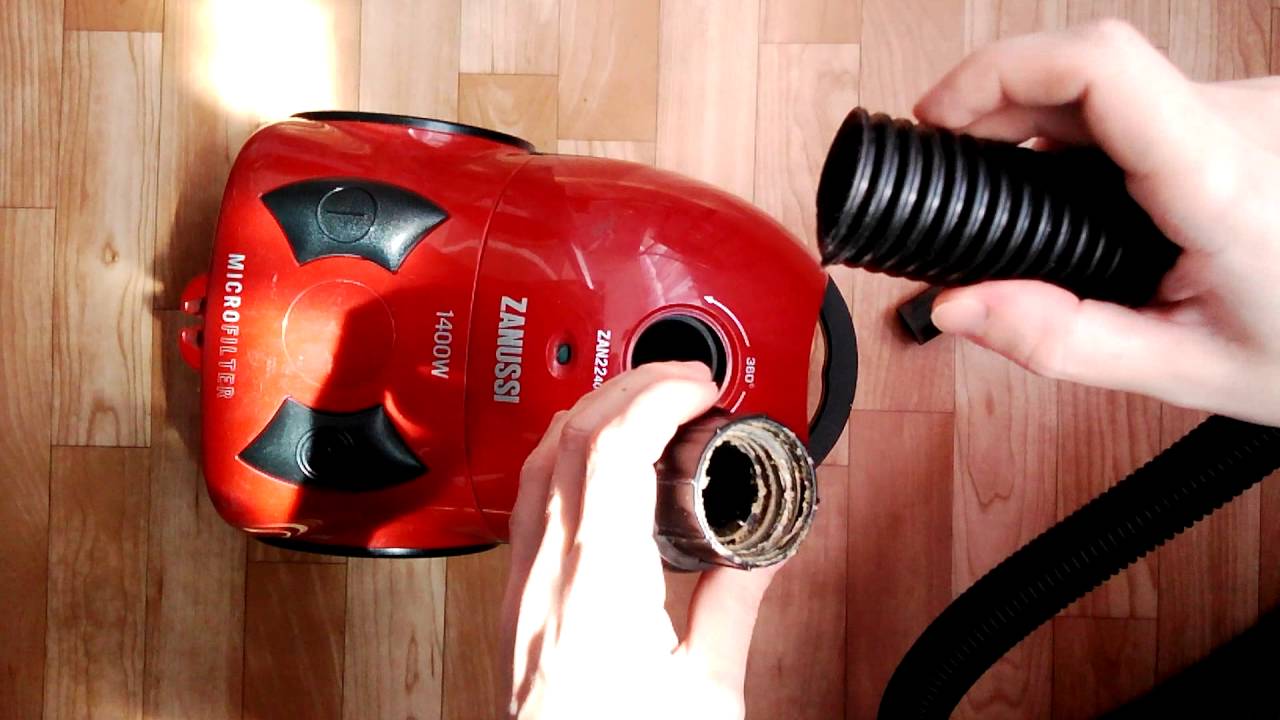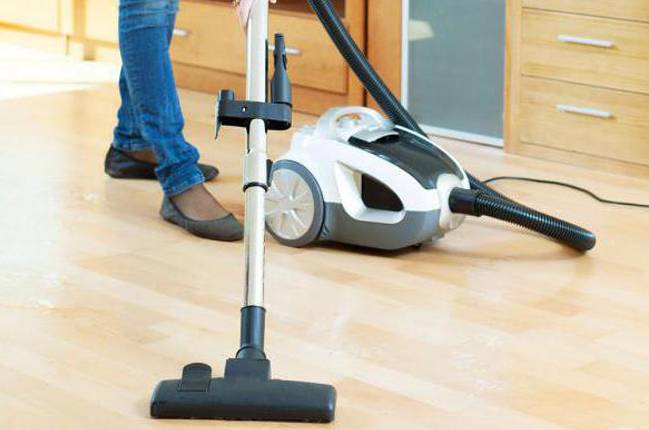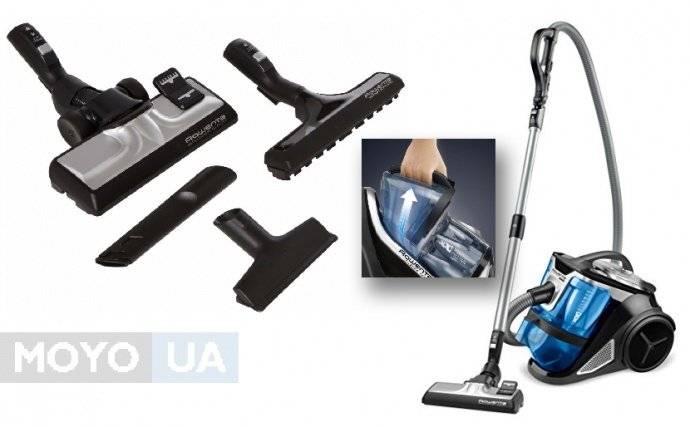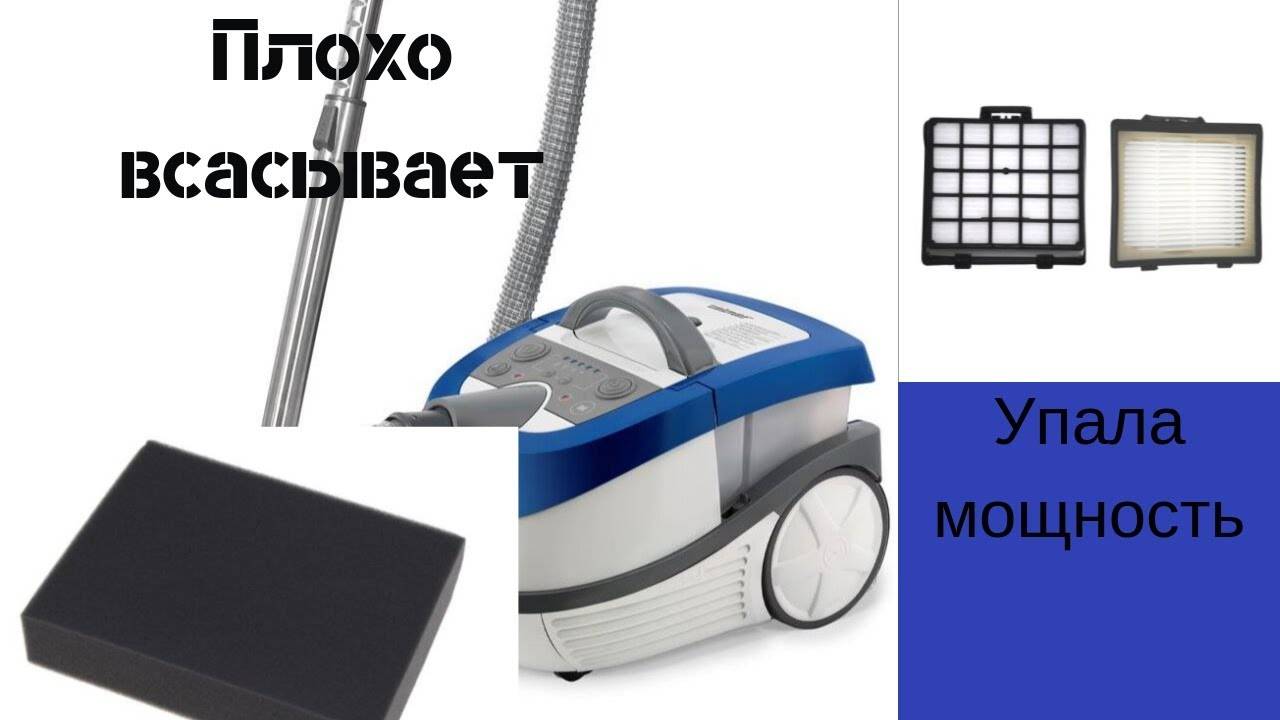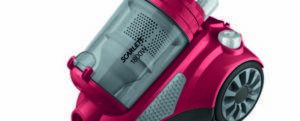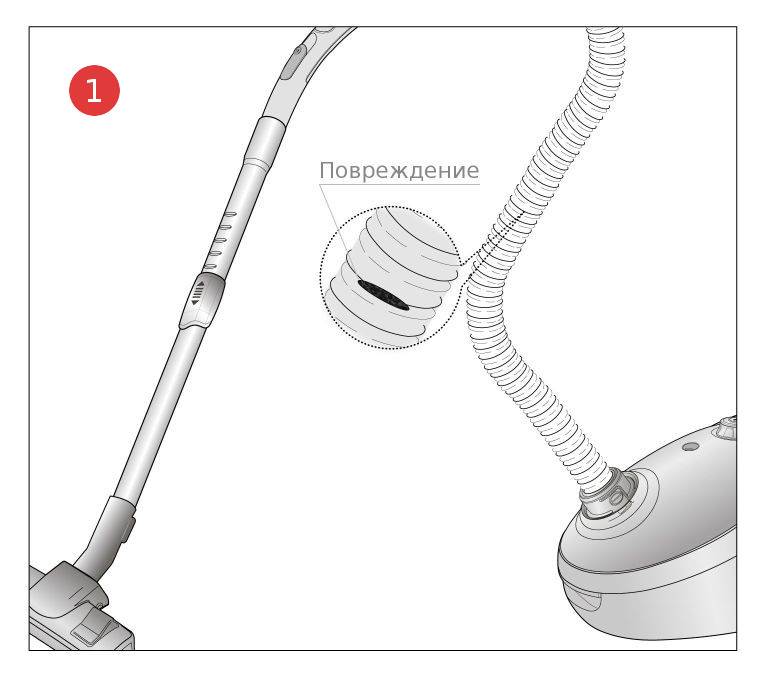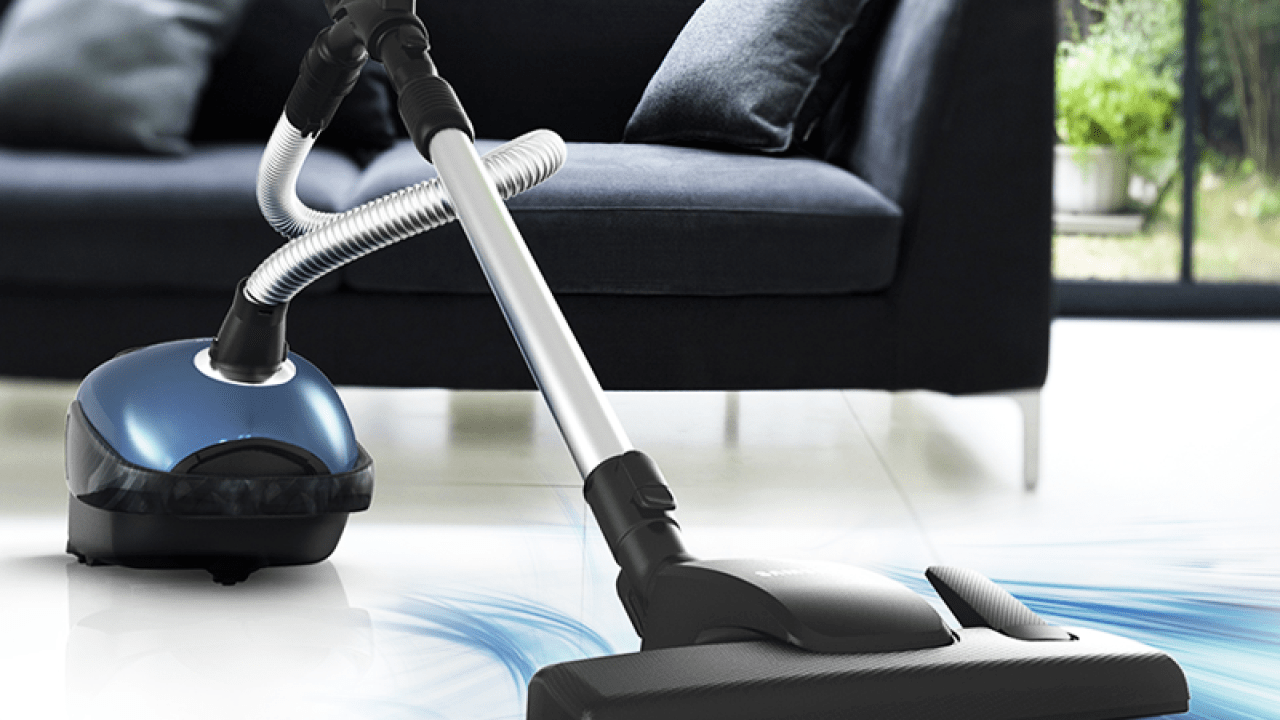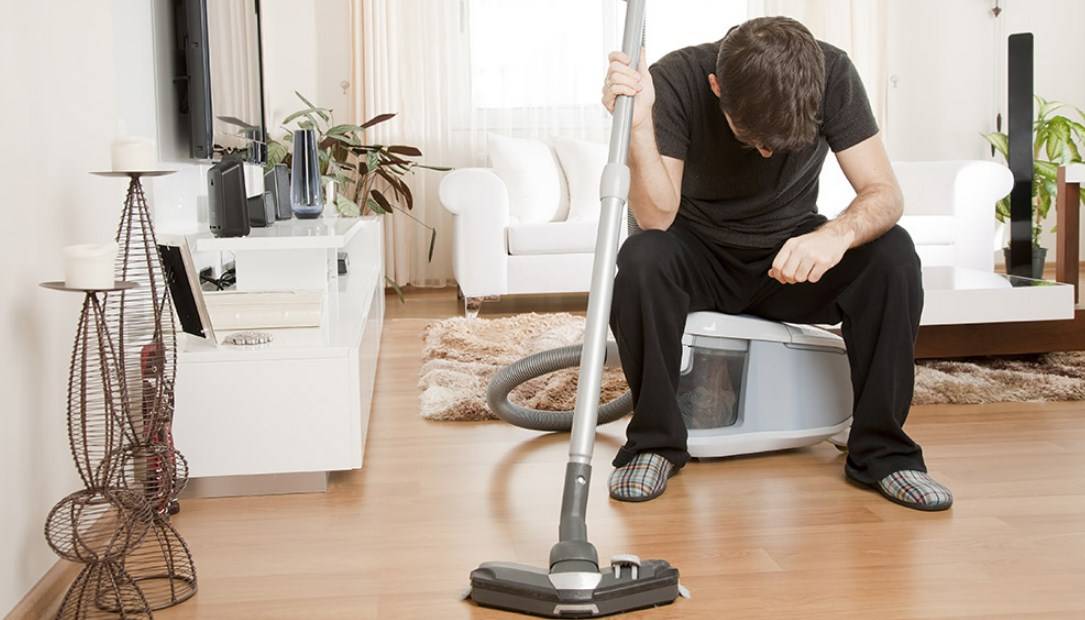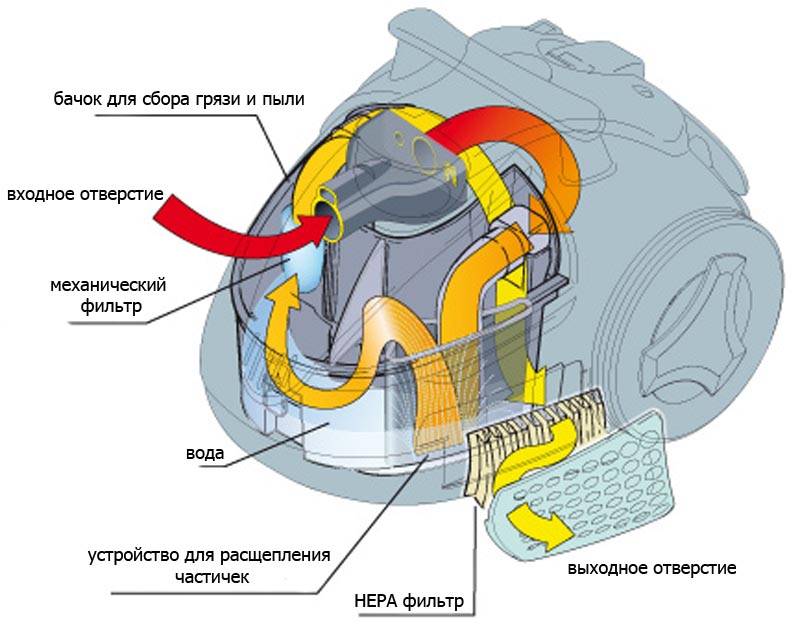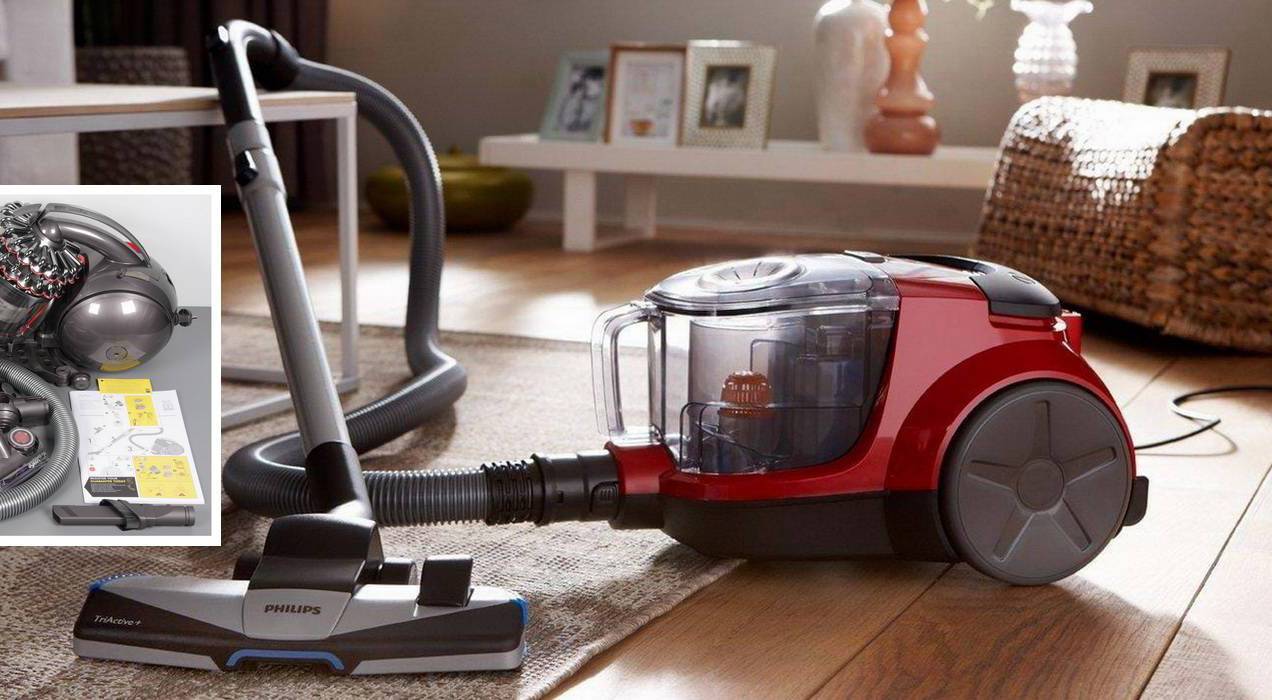It is not recommended to wash filters for a vacuum cleaner - only buy new ones
It all depends on the filters and a little - on your entrepreneurial spirit. Some of the filters can and even need to be used multiple times.
If the vacuum cleaner means a paper bag for collecting dust, then obviously it is not worth washing it. But try to find a fabric alternative to it - and your budget will say "thank you". Foam filters can also be washed with soap in warm water, dried and put back - they usually trap mechanical debris, accumulate wool and large pieces of dust.
Some vacuum cleaner filters can and should be washed. But not all
But it is better to change paper filters with an "accordion" - at home you will not clean it, even if you are sure of the opposite and armed with all kinds of rags and brushes. The same applies to HEPA filters - they have the final stage of cleaning, and they trap fine dust, bacteria and fungi, which cannot be completely eliminated. Although, there is one caveat - fluoroplastic HEPA filters with the W marking, which are made of a water-insoluble polymer, can be washed with water - but it is not always possible to clean them properly at home.
Checking the bag
The first thing you should do is check how full the bag is. If the debris has filled more than 2/3 of the container, the traction may become weaker or even disappear altogether when you vacuum. The paper bag must be replaced with a new one because it is disposable. If the container is fabric, it can be carefully shaken out and set back into the guides, but it is better to rinse in clean water and dry.
As a rule, in modern models of technology, the degree of clogging of the garbage bag is displayed on the body. The light indication in the form of a light bulb will light up green if the container is still empty and red if it is time to replace.
If you have cleaned, and the vacuum cleaner still does not suck well, look at the power regulator, perhaps it was accidentally set to a minimum, as a result of which the device does not draw air.
What else do you need to watch?
The vacuum cleaner does not suck well, what's next? If all of the above does not work, you should pay attention to the hose and brush. There are two reasons with the first element - it is not completely inserted into the socket of the vacuum cleaner itself, and the second is the presence of gaps
Traction is lost, since the hose is usually corrugated, and it is not always possible to notice a break on it immediately. Therefore, it is worth inspecting the entire unit.

Now for the brush. The vacuum cleaner does not suck well if debris collects on the brush or inside. This is usually hair or hair from pets. It is worth cleaning and checking the work. Everything can change. If the design of the brush is a roller, then it sometimes wears out and its operation creates problems. When the bearings break, the air does not go well either. Craftsmen believe that when the attachment is not full, the thrust will not be maximum. Therefore, you should not save on the purchase. It is the Chinese models that can sin with this.
How to repair an engine
If the vacuum cleaner does not pull dust, but the above factors are not identified, then this indicates a failure of the electric motor. Against the background of a decrease in power, the engine hums intensely, and the body of the device quickly overheats.
The described problems arise due to:
- wear of brushes and bearings;
- damage to the network cable;
- dust and debris entering the armature collector;
- damage to the electronic unit and other causes.
A common cause of failure of an electric motor is a blown fuse. To identify the localization of the malfunction, you will need to disassemble the device case and use a multimeter to "ring" all the wires.If the diagnostics showed that the problems with the motor are due to a broken winding, then experts recommend purchasing a new vacuum cleaner. The cost of the device and the specified part differ slightly from each other.
If there is a break in the wiring, then the latter must be soldered to the appropriate place, adhering to the diagram of a specific model of the vacuum cleaner. In other cases, it is recommended to hand over the equipment for repair. Without specialized skills, it is impossible to restore the electric motor on your own. Even installing brushes can create problems. If these parts are placed incorrectly, then the vacuum cleaner will not suck in, but blow out the air.
Clogged filters
The vacuum cleaner has two filters: pre-motor (installed in front of the electric motor) and exhaust (installed after the electric motor). If any of them is clogged, the suction power drops.
Filters look different on different models and are located in different places. Detailed information about them is given in the user manual.

Photo 3. For example, this is how the pre-motor filter of the Samsung SD9480 vacuum cleaner looks like

Photo 4. For example, this is how the exhaust filter of the Samsung SD9480 vacuum cleaner looks like
To check the status of filters:
-
Remove the pre-motor filter from the vacuum cleaner and turn it on. Check the suction force by hand. Never vacuum without a filter.
-
If the suction power increases without the pre-motor filter, clean the filter and reinstall it. Check the suction power again.
-
If the suction power does not change after installing the filter, then everything is in order with the vacuum cleaner, continue to use it.
-
If the suction power decreases after installing the filter, then the filter has become unusable. Purchase a new filter.
-
-
If the suction power does not change without the pre-motor filter, remove the exhaust filter from the vacuum cleaner. Check the suction force by hand without two filters. Never vacuum without filters. If the suction power increases without filters, clean both filters and reinstall them. Check the suction power again.
-
If the suction power does not change after installing the filters, then everything is in order with the vacuum cleaner, continue using it.
-
If the suction power decreases after installing the filters, then the filters have become unusable. Purchase new filters.
-
What causes dust to fly back into the air?
During normal operation of the equipment, dust that is ingested must remain inside and not re-enter the air. If this started to happen, then this indicates some kind of violation. Masters advise you to immediately stop cleaning, otherwise it can lead to a complete failure of the device.
What could be the problem:
- damaged garbage bag;
- improperly installed container.
The most common cause is bag damage. During the installation process, users can inadvertently damage it. As soon as it starts to fill, dust will fly out of it. In addition, reusable containers wear out and wipe themselves. So they need to be changed periodically.
Disruptions in work can be associated with the fact that the bag does not connect well with the hose and all the debris gets inside the equipment. In such a situation, it must be corrected.
Why is this phenomenon dangerous?
If nothing is done and debris gets inside, it will quickly clog the engine. The engine will start to overheat and then burn out altogether. Naturally, such repairs cost a lot of money.
In order not to become a victim of such a situation, always follow the basic rules of use. And when there are any irregularities in the work, then immediately call the wizard.
Looking for new spare parts for your vacuum cleaner?
In the Patok online store you will find parts for both the Zelmer brand and other brands. To do this, you need to go to the catalog and specify the required characteristics. Check with our consultants for more information. Give your technique a second life.
Ultraviolet illumination disinfects the work area
And again, an attempt to place a bet on the desire of the buyer to kill all microbes with literally one blow - simply by turning on a vacuum cleaner with ultraviolet illumination in the working area.
At first, robotic vacuum cleaners were equipped with UV lamps. In any case, it sounded beautiful: the vacuum cleaner rolls on the floor, removes debris and at the same time disinfects everything around. Then ordinary vacuum cleaners were pulled up - the lamps were placed in the working area in the area of the brush. There are even special "antibacterial" models for disinfection - with ultraviolet light.
For the UV light to work, you need to hold the vacuum cleaner in one place for a long time.
Ultraviolet radiation really disinfects and helps fight viruses and bacteria. In particular, shortwave UV light destroys the structure of viruses and makes them harmless or kills them. But in practice, this requires prolonged exposure to radiation on the surface: even an unsafe open-type lamp needs at least 15 minutes, and a closed one - half an hour or even an hour.
The constant vacuum cleaner moves and does not linger in the switched on state in one area. Even if you imagine that a UV lamp is installed in a vacuum cleaner so powerful that it kills microorganisms in just one brush stroke, then think about what kind of protection the user needs then. Indeed, when quartzing a room, it is recommended that everyone leave it, otherwise exposure to ultraviolet radiation is fraught with burns.
So do not overpay, and if you really want to disinfect something, buy a quartz lamp at home.
How much is this pleasure worth?
Unfortunately, it cannot be said that this is an inexpensive pleasure. But the equipment itself is clearly cheaper than the famous monster Kirby. At prices for the summer of 2015, the central unit Puzer (the vacuum cleaner itself) with a capacity of 1200W costs about 30,000 rubles, a set with a hose, pipe and nozzles for about 15,000 rubles. Costs money and air ducts, sockets, their installation. In principle, it is possible to use sewer pipes, which are cheaper, vacuum cleaners can also differ in prices. By the way, it should also be taken into account that for a large area of the house, a more powerful unit may be needed, which may cost more.
Be that as it may, it seems to me that such a vacuum cleaner should be considered not as a household appliance, but as a whole engineering system, then the price tag is no longer so scary :)
It is clear that when building a house, there are enough costs and not everyone is ready to shell out for this system. But!
What can be done at the construction stage and what is quite inexpensive are air ducts. They can be laid in the walls or in the foundation, a cable can be laid to them to control the future vacuum cleaner (so that the switch on the handle works), and you can start installing the system itself at any time, after the end of the main construction phase and even after finishing.
The central vacuum cleaner is a good example of the very future that has already arrived.
Any housewife tries to always keep her house clean. There is a regular cleaning service every week. And once every few months, women start a general cleaning of the entire house. It is clear that in each of these cases one cannot do without appropriate household appliances.
Of course, you can also clean it with a broom, scoop and wet rag, but it will take much longer. This method is only suitable for occasional cleaning. If you have started a complete cleaning, then it is difficult to do it without a vacuum cleaner.
At one fine moment, the hostesses are faced with such a nuisance, the device blows the dust back, although this should not be the case at all. They have a question, what to do and whether it is necessary to buy spare parts for Zelmer vacuum cleaners for replacement?
Other reasons
There are other reasons, "stupid". That happen on their own and never get on time. Sometimes with visible effects, sometimes without them. For example, you begin to notice over time that the switch of the vacuum cleaner is somehow not very “willingly turned on”.That is, if you press weakly, it will not turn on, and somehow it is fixed badly. And you press hard - everything will work. And every time it got worse and worse. And then there is a smell of "fried transformers" or plastic burnt insulation. Or at the moment of switching on - a flash or sparking in the toggle switch is so slight.
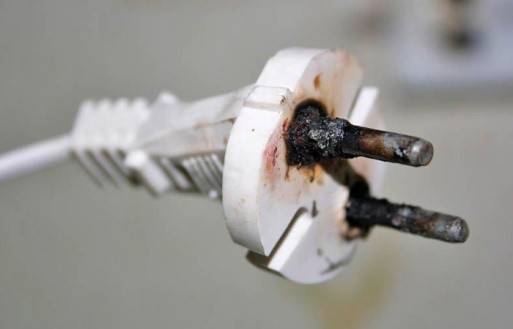
All this can be eliminated in only one way: open the device, get to all the wiring and check it from beginning to end. Actually, you need to start with a fork. Now fork plastic is non-separable molding, through which the wiring to the plug electrodes is simply probed by hand. If the wire is burnt out there or somehow comes off, then with an experienced hand you can establish a wire break on the plug. There is only one repair - cut off and discard. And replace it with a collapsible plug, which is sold in stores. You can, however, change the entire cord at once - it is a little more expensive and without fuss. But to bring the head of the family, put a plug on the wire, screw everything correctly - this is very honorable and edifying for the family: dad does, and everyone around is walking on tiptoe.
The cord is long, it is soldered inside the vacuum cleaner, and there is also a spring retraction coil, which is very easy to disassemble. Put everything back - you need skill or special devices, which are usually not at home, so it is better to repair the cord in a workshop, and only change the plug yourself.
A switch that has stopped working normally is unlikely to be repaired. It is built into the body and is not sold separately in stores. In this case, too, the road to the workshop.
Worst of all, when a malfunction occurs with the engine or with the control automation. In the motor, the stator windings can burn out or everything can melt from overheating or deform. Then you need to change the motor, the cost of which is usually almost half the price of a vacuum cleaner.
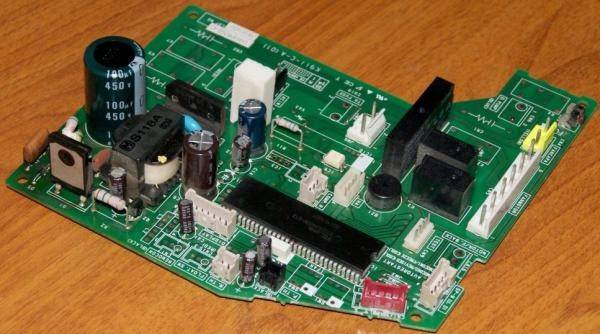
Smart vacuum cleaners have electronics that fail when there are short circuits inside the unit. And this is another of the parts that can be repaired well under the conditions adapted for this. Usually they are simply replaced in service departments with boards sent directly from the manufacturer. And in the future, service workers who love their work can replace your board with a new one, and try to fix the old one yourself, and then use the repaired board on another vacuum cleaner of the same type, respectively, for a lower price.
What, in fact, you can do, too, with a penchant for fixing useful things. And pick up your burned-out spare part after repair for your own experiments.
Large vacuum cleaner can be replaced by a robot
It would seem that you buy a robot vacuum cleaner - and the problem of manual cleaning is solved. Yes, in a sense, the robot replaces a household vacuum cleaner, but still it does not suck up all the garbage, but collects most of it with brushes from the floor. To remove finely dispersed dirt, such a device will have to drive over the same place several times. True, there is good news - the robot vacuum cleaner does not raise dust into the air just because of its low power.
The robot vacuum cleaner is only suitable for intermediate cleaning
Unfortunately, even with a robot, periodic cleaning with a large household vacuum cleaner is indispensable. The robot cannot drive under low furniture, it does not have a nozzle for the ceiling and walls, it does not know how to vacuum sofas. This unit is unlikely to cope with a fleecy carpet, and it has problems with cleaning corners and areas along the baseboards, no matter how many new solutions manufacturers introduce. On the other hand, it is perfect for maintenance cleaning - thanks to the robot, we can get out the "big vacuum cleaner" less often, but not completely abandon it.
How to diagnose
The drop in power is usually due to the following reasons:
- the bag is filled;
- clogged filters;
- clogged hoses and nozzles;
- the engine is out of order.
Possible reasons for a decrease in the power of the vacuum cleaner include mechanical damage.Therefore, before disassembling the equipment, it is recommended to inspect the case and accessories.
Bag check
If the vacuum cleaner does not suck up dirt well, then this indicates that the bag is at least 2/3 full. This reason is considered the most common. To restore the operation of the vacuum cleaner, you will need (depending on the type of dust collector):
- Throw out the paper bag and replace with a new one.
- Shake out the cloth bag and, if possible, rinse, dry and replace.
- Rinse plastic container and wipe dry.
This technique is usually complemented by an indicator that indicates that the dust container is full. But if the bag is half empty, then it is necessary to look for the reason for the drop in the suction force in the filters.
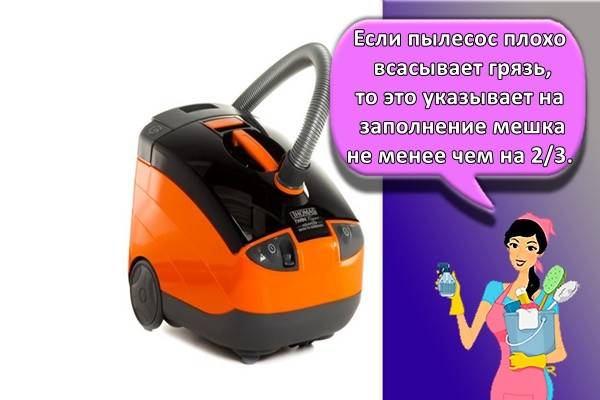
Cleaning the filters
A second common cause of power loss is clogged filters. The type of the latter depends on the type of vacuum cleaner. Filters are:
- fine and coarse cleaning;
- foam, paper and others;
- disposable and reusable;
- HEPA.
The last filter, in addition to removing small particles, also does not allow allergens back into the air. Basically, this component, in case of clogging, is thrown away and replaced with a new one.
This component is placed between the dust container and the hose. The second filter, which provides fine cleaning, is attached to the back of the vacuum cleaner body. This part prevents small particles from entering the air. It is also recommended to periodically rinse the fine filter in water. And after 50 such procedures, the product must be replaced with a new one.
Component inspection
When cleaning the premises, objects or wool often get into the hoses and nozzles, which clog the air duct. Because of this, the power of the device decreases. Therefore, when the suction power decreases, you need to clean brushes and other similar attachments from hair, threads, fabric and other third-party materials. If necessary, these components must be rinsed under running water and then dried.
Mechanical damage
A decrease in suction power can be caused by cracks in the components (mainly on the hose), broken nozzles, or a dent in the body. The specified parts are made of plastic. Therefore, the described malfunctions cannot be eliminated by hand. If external defects are detected on body parts, damaged nozzles, hoses or the body must be replaced with new ones.
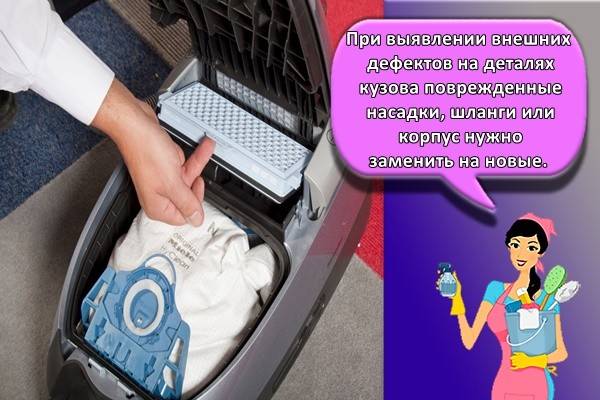
Diagnostics start - checking the components of the vacuum cleaner
The easiest and most primitive way to test the force of air suction is to put your hand on the inlet of the hose (the end where the nozzle is attached), having previously connected the vacuum cleaner to the network. Then disconnect the hose from the vacuum cleaner and check the suction power by hand without hoses, tubes and nozzles.
If you feel that the power has increased markedly - look for a kink or crack in the tube or hose, it may be time to replace these elements.
Filtero manufactures universal hoses and tubes for various brands and models of vacuum cleaners.
Also, large debris could get stuck in the nozzle or, less often, in the hose of the vacuum cleaner - try cleaning these parts with a long wire or something similar to catch the dirt and pull it out.
What's with the bag?
The very first thing is bag control. If its filling is more than a third, then the thrust disappears or decreases. The disposable bag is thrown away, and the fabric bag is carefully shaken. Sometimes you can wash it, but then dry it well. There is also modern technology with a fill indicator. Thanks to him, you do not need to keep records - everything is visible at once.
But the most convenient thing is plastic glasses. They contain a filter. It is pulled out and cleaned out.

It also happens that all the above manipulations do not help.
Pay attention to the power regulator, as it can accidentally move. It is enough just to put it back in place or adjust it, and the process will be normal again.
Sometimes, by collecting any liquid with the unit, it is possible to disrupt the traction. In this case, you need to dry your vacuum cleaner.
Washing washable and reusable filters
Some filters are "reusable" and their manufacturers allow the filter to be rinsed under running warm water to clean it. Read the instructions for your vacuum cleaner carefully. There may be more information on flushing the filter. It is not necessary to rinse paper filters, as they can get wet and lose their filtering properties.
If rinsing the filter does not bring satisfactory results, then the filter is most likely worn out and needs to be replaced.
High-quality HEPA filters are able not only to visually keep the room clean and protect the internal parts of the vacuum cleaner from wear and tear, but also clean the air from the smallest particles, microbes, microorganisms. The service life of the filters, according to the recommendations of the vacuum cleaner manufacturers, is usually 6 months and may be reduced depending on the operating conditions.
Full dust collector
An overfilled dustbin is a common reason why a vacuum cleaner pulls very badly. And it is the easiest to deal with.
- If there is a plastic container in the vacuum cleaner, it is recommended to shake it out and wipe it first with a damp and then dry cloth.
- A bag-type cleaning gadget like the Rowenta RO5227EA is even easier to clean: just replace the disposable tank with a new one. However, if reusable microfiber or cloth bags are used, they need to be shaken out and washed.
The dust container should be cleaned as soon as it becomes dirty. In this case, the question why the vacuum cleaner sucks so poorly will not arise.
This is interesting: Handheld vacuum cleaner: how to choose and how to use: 5 advantages and 5 selection criteria
Vacuum cleaner device
The main part of vacuum cleaners is arranged in approximately the same way. The vacuum cleaner has an inertial air pump (snail). This pump is driven by a brush motor. The pump sucks in air.
Air is sucked in through the nozzle, passes through the pipe that you hold in your hand when cleaning, through the hose, and enters the filter. The filter can be of several types: bag, water, cyclone. Swallowed dust, dirt, debris settle in this filter. We then throw them out of it.
Then the air enters the fine filter (or filter system). These filters or filter trap small dust particles that have slipped through the main filter so that they do not get into the pump, engine, room air, our lungs.
After the fine filter, the air enters the pump - the snail and is blown out into the space of the room to be cleaned.
With a turbo brush, the power of the vacuum cleaner will increase
Vacuum cleaners are often equipped with a turbo brush with stiff bristles on a rotating roller - it comes in addition to the usual nozzle. For some reason, marketers like to advertise its effectiveness, hinting at increasing the suction power of a vacuum cleaner.
The turbo brush cleans carpets better, but does not increase the power of the vacuum cleaner
The turbo brush is indeed more effective than a conventional nozzle when it comes to cleaning carpets, but the suction power has nothing to do with it. The fact is that due to the rotation of the bristles, the brush literally combes out debris from long-pile carpets - the result is much better than from the work of a simple nozzle. By the way, with a turbo brush, the suction power can even be reduced.
What else can be (not) convenient
It may seem that it is not very convenient to wind up the hose and hang it on this hook. If so, then there are different systems that simplify life in this aspect too - from a large reel on which the hose is wound with a handle (Rollme system) to special outlets in which the hose is already built in and it seems to be pulled out of the wall as necessary and automatically retracts back for hidden storage (system).
There is a video about Hide-A-Hose, though in English, but everything is clear there (by the way, you can also listen to how the vacuum cleaner makes noise):
There is also a video about Rollme, not even in English, but, it seems, in Finnish, but the essence, again, is easy to grasp.While there is nothing impressive about this system, unlike Hide-A-Hose, of course not:
In Smolyachkovo, in addition to what you saw in the photo, there will also be a pneumosovka. One video is better than a thousand words, watch it and you will immediately understand what it is and how it can be useful in the kitchen or in the hallway:
Briefly summarize the benefits
So, the good thing about a central vacuum cleaner is that you don't have to carry around a heavy, noisy, hot-blooded box on wheels that blows in all directions with stinking dust.
You simply plug a long, soft and flexible hose into an outlet on the wall (or maybe even easier - you pull the built-in hose out of the wall), flip the switch on the handle and vacuum.
No noise - the vacuum cleaner hums somewhere in the garage or boiler room.
No stench and no dust lifted into the air by blowing the vacuum cleaner from the floor and other surfaces - your central vacuum cleaner collects all the dirt in a large disposable bag, which is easy to replace, and it is blown out of the house, so dust residues that did not get into the bag and filter, just fly away into the street.
Ways to solve problems
Diagnostics only helps to find the cause of the malfunction of the vacuum cleaner. Further actions are aimed at eliminating the breakdown.
Dust collector
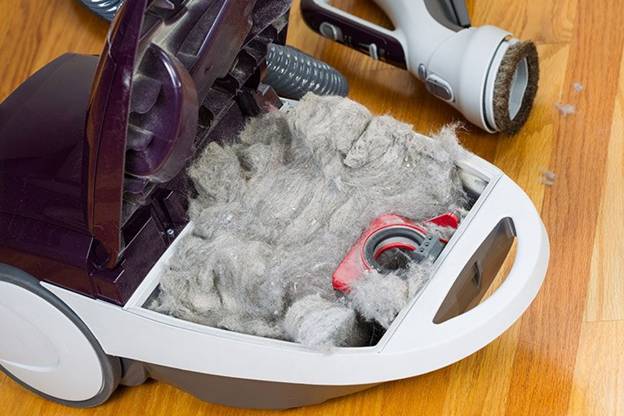
Overfilling the dust container with debris is the most common problem with poor suction. For any vacuum cleaner it is not allowed to fill the bag or container more than 80%. With an increase in debris, traction weakens or completely disappears.
Manufacturers of expensive models are equipped with light indicators of the fullness of the dust collector. The green light of the lamp indicates normal operation. When the indicator is red, the dust container is full and needs cleaning. Cheap vacuum cleaners do not have this function. The dust container has to be checked after every cleaning.
Troubleshooting a dirty dust bin is simple. At the cyclone, it is enough to simply throw the debris out of the container. The disposable paper bag is just thrown away, and a new one is put in its place. The dust bag cannot be used a second time. After use and thorough shaking, the paper walls of the bag loosen. A re-installed disposable dust bag will burst with a strong air stream and dust will be sucked into the fan.
The hostess always only shakes out the cloth reusable dust collectors. The cleaning method is good, but not effective. A large amount of dust remains between the fibers of the fabric, blocking the free passage of air. Rinse cloth bags in clean water after several times of use.
The dust bag may not be your fault if the power regulator is screwed on tightly. Sometimes turning the wheel can solve the problem of poor suction.
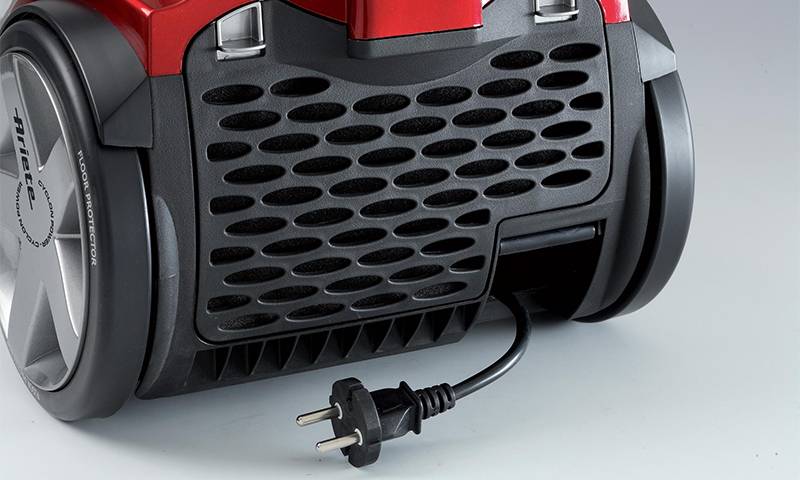
Fine filters

They pay attention to dirty dust collectors more often than to fine filters, but in vain. One of them stands in front of the fan
In cyclones, a foam rubber plate, enclosed inside a plastic collapsible case, usually acts as a filter. The foam is heavily clogged with dust after each cleaning. The plate is carefully knocked out and rinsed in water. Additionally, the plastic filter housing has a fine mesh at the back. It must be rinsed out.
The second fine filter is located at the exhaust of the vacuum cleaner. Usually it is designed as a separate box with many cells. The filter prevents dust residues from flying out of the vacuum cleaner into the room. Clogged cells are cleaned with a soft brush or rinsed with clean water. Such procedures will be crowned with success a couple of times. The filter must be replaced after 50 hours of operation.
Components

The accessories of the vacuum cleaner include a corrugated hose, telescopic handle, working attachments. During cleaning, a large object that is accidentally pulled in is jammed in bends or transitions. The hose and telescopic handle can be cleaned with a long, burr-free stick or soft, insulated wire. The air channel of the working nozzle is usually curved.It is easier to clean it with something that is well bendable: wire, cable, elastic PVC rod.
On the brush, check the wheels after cleaning. Hair is often wound around them. If the roller is equipped with bearings, lubricate them.
Additionally, the joints of all elements are checked. Loose locks, cracks and other defects create air leaks. A broken hose is immediately replaced. Temporarily the gap is eliminated with a transition sleeve. The hose is cut, a piece of plastic tube is inserted inside, the joints are clamped with clamps and wrapped with tape.
Electric motor
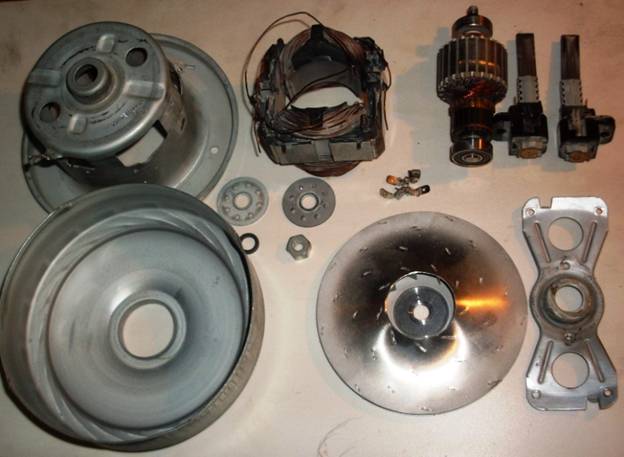
If the weak traction is caused by the electrical part of the vacuum cleaner, the motor will start to malfunction. Extraneous noise appears, the body gets very hot, the speed decreases or "floats".
There are many reasons for malfunctions:
- defect in the network cable;
- wear of brushes, bearings;
- contamination of the armature collector;
- failure of the start button or electronic unit.

Finding the cause is difficult without basic knowledge of electrical engineering. The electric motor will have to be completely removed, disassembled and all parts ringed with a multimeter. You can independently change the brushes, bearings or fuse on the electronic unit. The short circuit of the windings cannot be eliminated. You will have to contact the service or buy a new motor.
There are many reasons for poor suction of a vacuum cleaner, and they all negatively affect the electric motor. At the first signs of a decrease in productivity, it is impossible to hesitate with the repair.
The higher the power consumption of the vacuum cleaner, the better it sucks up dust.
Manufacturers often try to lure buyers with the incredible power of the vacuum cleaner, promising that it will almost tear off laminate flooring thanks to its 2000 watts under the hood. But in reality, the power consumption does not mean the force of air intake.
And, meanwhile, it is she who is an important characteristic of the vacuum cleaner - it is also called useful power.
The vacuum cleaner can have high power consumption, but small air suction power
Manufacturers spread little about the suction power, even if it is decent. Usually this parameter is indicated in the instructions or specifications attached to the vacuum cleaner. If the power consumption of a household vacuum cleaner is 1500–2500 W, then the suction power is usually 300–550 W.
The more you demand from the vacuum cleaner, the higher the suction power should be. So, 350 W is more than enough for cleaning smooth floor coverings, 400 W - for cleaning carpets, even if there are pets at home, and a vacuum cleaner with a suction power above 450 W will successfully cope with long-pile carpets and cleaning upholstered furniture.
The washing vacuum cleaner is bulky and inconvenient
Wet cleaning is a useful feature, but it is believed that a washing vacuum cleaner is very inconvenient. Many buyers do not even consider this type of vacuum cleaner due to their impressive size and difficulty in maintenance. After all, after cleaning, the unit must be disassembled, washed water tanks, dried and put back together. And you still have to keep several vacuum cleaners at home - at least for dry and wet cleaning separately.
A washing vacuum cleaner is no longer as large and difficult to maintain as it used to be
But many manufacturers have already been able to resolve this issue. Firstly, small washing vacuum cleaners have appeared, which are quite comparable in size to ordinary household “colleagues” for dry cleaning.
Secondly, there are often compact universal models that are capable of doing dry and wet cleaning. And, thirdly, progress does not stand still - the design of the washing units is noticeably simplified, and the care of many of them consists simply in rinsing the water container. There are even robotic floor polishers for intermediate wet cleaning (by analogy with dry cleaning), which do their job well.

